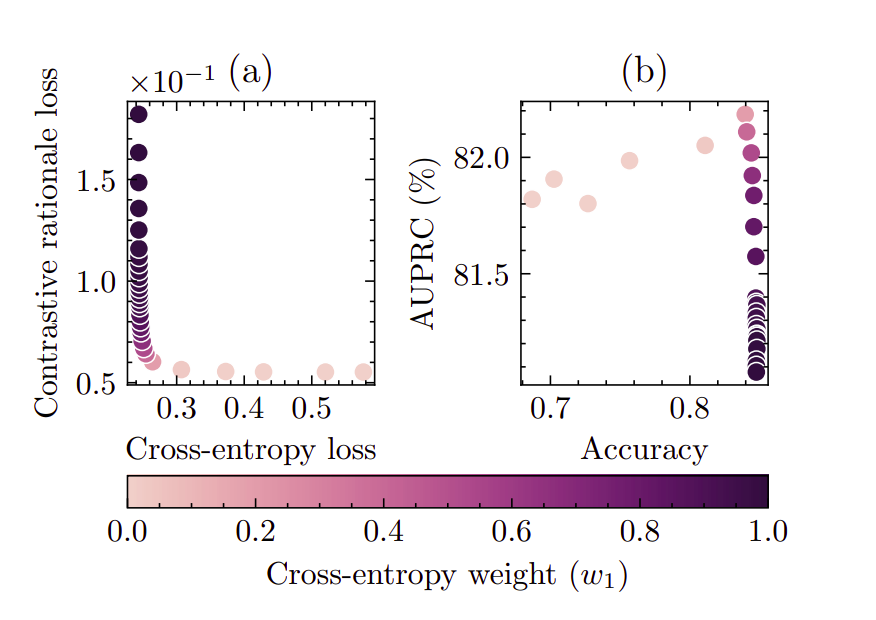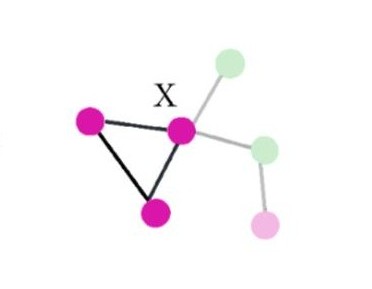publications
You can also check my Google Scholar profile.
2025
- Preprint
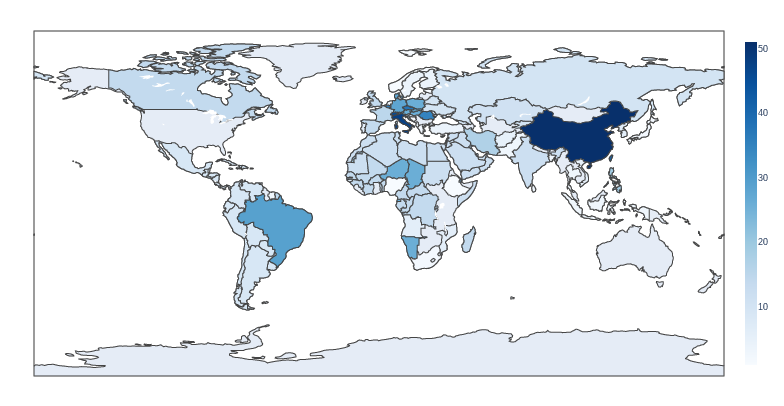 Explainability and Interpretability of Multilingual Large Language Models: A SurveyLucas Resck, Isabelle Augenstein, and Anna KorhonenOpenReview , Jun 2025
Explainability and Interpretability of Multilingual Large Language Models: A SurveyLucas Resck, Isabelle Augenstein, and Anna KorhonenOpenReview , Jun 2025Multilingual large language models (MLLMs) demonstrate state-of-the-art capabilities across diverse cross-lingual and multilingual tasks. Their complex internal mechanisms, however, often lack transparency, posing significant challenges in elucidating their internal processing of multilingualism, cross-lingual transfer dynamics and handling of language-specific features. This paper addresses this critical gap by presenting a survey of current explainability and interpretability methods specifically for MLLMs. To our knowledge, it is the first comprehensive review of its kind. Existing literature is categorised according to the explainability techniques employed, the multilingual tasks addressed, the languages investigated and available resources. The survey further identifies key challenges, distils core findings and outlines promising avenues for future research within this rapidly evolving domain.
@misc{resck_explainability_2025, title = {Explainability and {Interpretability} of {Multilingual} {Large} {Language} {Models}: {A} {Survey}}, copyright = {Licensed under Creative Commons Attribution 4.0 International}, shorttitle = {Explainability and {Interpretability} of {Multilingual} {Large} {Language} {Models}}, url = {https://openreview.net/forum?id=KQjVhM2YhN}, language = {en}, author = {Resck, Lucas and Augenstein, Isabelle and Korhonen, Anna}, month = jun, year = {2025}, bibtex_show = true, google_scholar_id = {KlAtU1dfN6UC}, } - AI & Law 2025
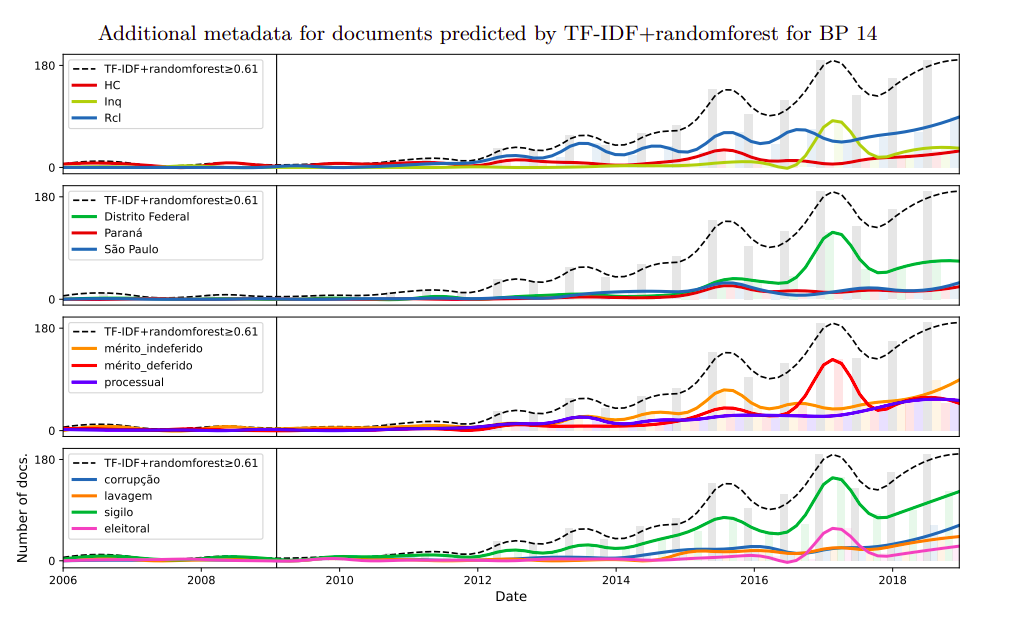 Empirical analysis of binding precedent efficiency in Brazilian Supreme Court via case classificationRaphaël Tinarrage, Henrique Ennes, Lucas Resck, Lucas T. Gomes, Jean R. Ponciano, and Jorge PocoArtificial Intelligence and Law, May 2025
Empirical analysis of binding precedent efficiency in Brazilian Supreme Court via case classificationRaphaël Tinarrage, Henrique Ennes, Lucas Resck, Lucas T. Gomes, Jean R. Ponciano, and Jorge PocoArtificial Intelligence and Law, May 2025Binding precedents (súmulas vinculantes) constitute a juridical instrument unique to the Brazilian legal system and whose objectives include the protection of the Federal Supreme Court against repetitive demands. Studies of the effectiveness of these instruments in decreasing the Court’s exposure to similar cases, however, indicate that they tend to fail in such a direction, with some of the binding precedents seemingly creating new demands. We empirically assess the legal impact of five binding precedents, 11, 14, 17, 26, and 37, at the highest Court level through their effects on the legal subjects they address. This analysis is only possible through the comparison of the Court’s ruling about the precedents’ themes before they are created, which means that these decisions should be detected through techniques of Similar Case Retrieval, which we tackle from the angle of Case Classification. The contributions of this article are therefore twofold: on the mathematical side, we compare the use of different methods of Natural Language Processing — TF-IDF, LSTM, Longformer, and regex — for Case Classification, whereas on the legal side, we contrast the inefficiency of these binding precedents with a set of hypotheses that may justify their repeated usage. We observe that the TF-IDF models performed slightly better than LSTM and Longformer when compared through common metrics; however, the deep learning models were able to detect certain important legal events that TF-IDF missed. On the legal side, we argue that the reasons for binding precedents to fail in responding to repetitive demand are heterogeneous and case-dependent, making it impossible to single out a specific cause. We identify five main hypotheses, which are found in different combinations in each of the precedents studied.
@article{tinarrage_empirical_2025, title = {Empirical analysis of binding precedent efficiency in {Brazilian} {Supreme} {Court} via case classification}, copyright = {Creative Commons CC BY 4.0. Copyright vested in the Author(s).}, issn = {1572-8382}, url = {https://doi.org/10.1007/s10506-025-09458-6}, doi = {10.1007/s10506-025-09458-6}, language = {en}, journal = {Artificial Intelligence and Law}, author = {Tinarrage, Raphaël and Ennes, Henrique and Resck, Lucas and Gomes, Lucas T. and Ponciano, Jean R. and Poco, Jorge}, month = may, year = {2025}, bibtex_show = true, google_scholar_id = {3fE2CSJIrl8C}, } - AI & Law 2025
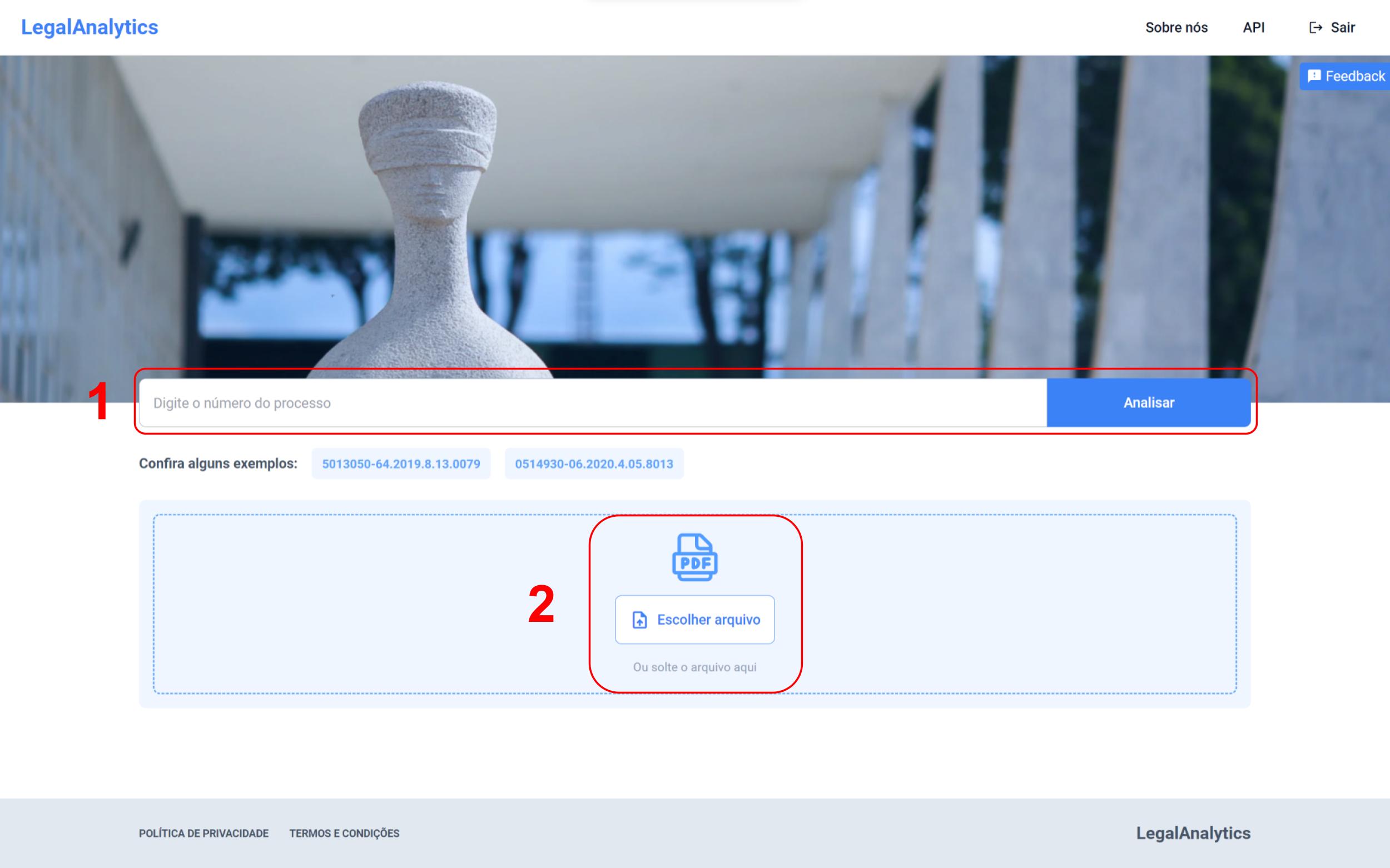 LegalAnalytics: bridging visual explanations and workload streamline in Brazilian Supreme Court appealsLucas Resck, Felipe Moreno-Vera, Tobias Veiga, Gerardo Paucar, Ezequiel Fajreldines, Guilherme Klafke , and 2 more authorsArtificial Intelligence and Law, Feb 2025Accepted for publication
LegalAnalytics: bridging visual explanations and workload streamline in Brazilian Supreme Court appealsLucas Resck, Felipe Moreno-Vera, Tobias Veiga, Gerardo Paucar, Ezequiel Fajreldines, Guilherme Klafke , and 2 more authorsArtificial Intelligence and Law, Feb 2025Accepted for publicationThe Brazilian Supreme Court (STF) serves as the highest judicial authority in Brazil and is responsible for adjudicating constitutional matters presented as Extraordinary Appeals (REs). These appeals undergo a rigorous screening process guided by established legal principles known as Topics of General Repercussion. Seeking to streamline this procedure, we developed LegalAnalytics to explore the research question: Can machine learning and explainable AI techniques enhance the classification of appeals in legal workflows?. LegalAnalytics harnesses advanced natural language processing algorithms and classification models to categorize each appeal according to the most pertinent topics accurately. In addition, it incorporates LIME (Local Interpretable Model-agnostic Explanations) to highlight the key sections of an appeal and compare them with relevant precedents. This approach ensures a transparent justification for every classification. The system is thoughtfully designed with a user-friendly interface tailored for public servants, judges, and lawyers. Extensive testing with dozens of legal experts confirmed the effectiveness of LegalAnalytics, with consistently positive feedback underscoring its significant practical impact.
@article{resck_legalanalytics_2025, title = {{LegalAnalytics}: bridging visual explanations and workload streamline in {Brazilian} {Supreme} {Court} appeals}, issn = {1572-8382}, shorttitle = {{LegalAnalytics}}, url = {https://www.repository.cam.ac.uk/handle/1810/383830}, doi = {10.1007/s10506-025-09446-w}, language = {en}, journal = {Artificial Intelligence and Law}, author = {Resck, Lucas and Moreno-Vera, Felipe and Veiga, Tobias and Paucar, Gerardo and Fajreldines, Ezequiel and Klafke, Guilherme and Nonato, Luis G. and Poco, Jorge}, month = feb, year = {2025}, note = {Accepted for publication}, bibtex_show = true, google_scholar_id = {kNdYIx-mwKoC} }
2024
- Exploring the Trade-off Between Model Performance and Explanation Plausibility of Text Classifiers Using Human RationalesLucas Resck, Marcos M. Raimundo, and Jorge PocoIn Findings of the Association for Computational Linguistics: NAACL 2024 . Also presented as a poster at the LatinX in NLP at NAACL 2024 workshop , Jun 2024
Saliency post-hoc explainability methods are important tools for understanding increasingly complex NLP models. While these methods can reflect the model’s reasoning, they may not align with human intuition, making the explanations not plausible. In this work, we present a methodology for incorporating rationales, which are text annotations explaining human decisions, into text classification models. This incorporation enhances the plausibility of post-hoc explanations while preserving their faithfulness. Our approach is agnostic to model architectures and explainability methods. We introduce the rationales during model training by augmenting the standard cross-entropy loss with a novel loss function inspired by contrastive learning. By leveraging a multi-objective optimization algorithm, we explore the trade-off between the two loss functions and generate a Pareto-optimal frontier of models that balance performance and plausibility. Through extensive experiments involving diverse models, datasets, and explainability methods, we demonstrate that our approach significantly enhances the quality of model explanations without causing substantial (sometimes negligible) degradation in the original model’s performance.
@inproceedings{resck_exploring_2024, address = {Mexico City, Mexico}, title = {Exploring the {Trade}-off {Between} {Model} {Performance} and {Explanation} {Plausibility} of {Text} {Classifiers} {Using} {Human} {Rationales}}, url = {https://aclanthology.org/2024.findings-naacl.262}, doi = {10.18653/v1/2024.findings-naacl.262}, language = {English}, booktitle = {Findings of the {Association} for {Computational} {Linguistics}: {NAACL} 2024}, publisher = {Association for Computational Linguistics}, author = {Resck, Lucas and Raimundo, Marcos M. and Poco, Jorge}, editor = {Duh, Kevin and Gomez, Helena and Bethard, Steven}, month = jun, year = {2024}, pages = {4190--4216}, bibtex_show = true, google_scholar_id = {5nxA0vEk-isC}, } - MSc thesis
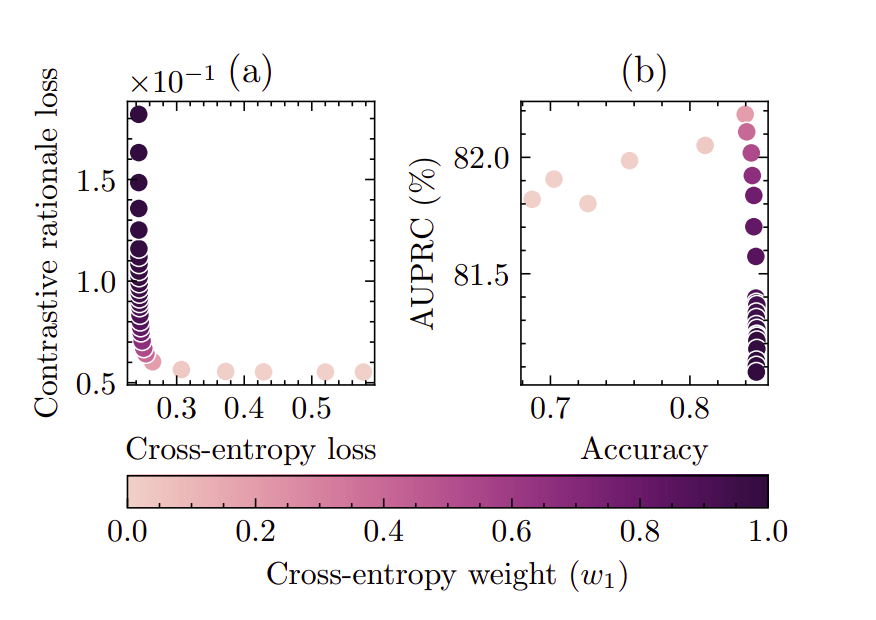 Balancing performance and explanation plausibility: a multi-objective approach to text classification with human rationalesLucas Emanuel Resck DominguesFundação Getulio Vargas , May 2024
Balancing performance and explanation plausibility: a multi-objective approach to text classification with human rationalesLucas Emanuel Resck DominguesFundação Getulio Vargas , May 2024Saliency post-hoc explainability methods are important tools for understanding increasingly complex NLP models. While these methods can reflect the model’s reasoning, they may not align with human intuition, making the explanations not plausible. In this work, we present a methodology for incorporating rationales, which are text annotations explaining human decisions, into text classification models. This incorporation enhances the plausibility of post-hoc explanations while preserving their faithfulness. Our approach is agnostic to model architectures and explainability methods. We introduce the rationales during model training by augmenting the standard cross-entropy loss with a novel loss function inspired by contrastive learning. By leveraging a multi-objective optimization algorithm, we explore the trade-off between the two loss functions and generate a Pareto-optimal frontier of models that balance performance and plausibility. Through extensive experiments involving diverse models, datasets, and explainability methods, we demonstrate that our approach significantly enhances the quality of model explanations without causing substantial (sometimes negligible) degradation in the original model’s performance.
@mastersthesis{domingues_balancing_2024, address = {Rio de Janeiro, Brazil}, title = {Balancing performance and explanation plausibility: a multi-objective approach to text classification with human rationales}, shorttitle = {Balancing performance and explanation plausibility}, url = {https://hdl.handle.net/10438/35362}, language = {eng}, school = {Fundação Getulio Vargas}, author = {Domingues, Lucas Emanuel Resck}, month = may, year = {2024}, bibtex_show = true, google_scholar_id = {MXK_kJrjxJIC}, }
2023
- LegalVis: Exploring and Inferring Precedent Citations in Legal DocumentsLucas E. Resck*, Jean R. Ponciano*, Luis Gustavo Nonato, and Jorge PocoIEEE Transactions on Visualization and Computer Graphics. Presented at Visualization & Visual Analytics (VIS) 2022 , Jun 2023
To reduce the number of pending cases and conflicting rulings in the Brazilian Judiciary, the National Congress amended the Constitution, allowing the Brazilian Supreme Court (STF) to create binding precedents (BPs), i.e., a set of understandings that both Executive and lower Judiciary branches must follow. The STF’s justices frequently cite the 58 existing BPs in their decisions, and it is of primary relevance that judicial experts could identify and analyze such citations. To assist in this problem, we propose LegalVis, a web-based visual analytics system designed to support the analysis of legal documents that cite or could potentially cite a BP. We model the problem of identifying potential citations (i.e., non-explicit) as a classification problem. However, a simple score is not enough to explain the results; that is why we use an interpretability machine learning method to explain the reason behind each identified citation. For a compelling visual exploration of documents and BPs, LegalVis comprises three interactive visual components: the first presents an overview of the data showing temporal patterns, the second allows filtering and grouping relevant documents by topic, and the last one shows a document’s text aiming to interpret the model’s output by pointing out which paragraphs are likely to mention the BP, even if not explicitly specified. We evaluated our identification model and obtained an accuracy of 96%; we also made a quantitative and qualitative analysis of the results. The usefulness and effectiveness of LegalVis were evaluated through two usage scenarios and feedback from six domain experts.
@article{resck_legalvis_2023, title = {{LegalVis}: {Exploring} and {Inferring} {Precedent} {Citations} in {Legal} {Documents}}, volume = {29}, issn = {1941-0506}, shorttitle = {{LegalVis}}, url = {https://ieeexplore.ieee.org/document/9716779/}, doi = {10.1109/TVCG.2022.3152450}, language = {English}, number = {6}, journal = {IEEE Transactions on Visualization and Computer Graphics}, author = {Resck, Lucas E. and Ponciano, Jean R. and Nonato, Luis Gustavo and Poco, Jorge}, month = jun, year = {2023}, keywords = {Data visualization, Task analysis, Visual analytics, Law, Natural language processing, Legal documents, natural language processing, Analytical models, Text analysis, Brazilian legal system, visual analytics}, pages = {3105--3120}, bibtex_show = true, google_scholar_id = {ufrVoPGSRksC}, } - Distill n’ Explain: explaining graph neural networks using simple surrogatesTamara Pereira, Erik Nascimento, Lucas E. Resck, Diego Mesquita, and Amauri SouzaIn Proceedings of The 26th International Conference on Artificial Intelligence and Statistics , Apr 2023
Explaining node predictions in graph neural networks (GNNs) often boils down to finding graph substructures that preserve predictions. Finding these structures usually implies back-propagating through the GNN, bonding the complexity (e.g., number of layers) of the GNN to the cost of explaining it. This naturally begs the question: Can we break this bond by explaining a simpler surrogate GNN? To answer the question, we propose Distill n’ Explain (DnX). First, DnX learns a surrogate GNN via knowledge distillation. Then, DnX extracts node or edge-level explanations by solving a simple convex program. We also propose FastDnX, a faster version of DnX that leverages the linear decomposition of our surrogate model. Experiments show that DnX and FastDnX often outperform state-of-the-art GNN explainers while being orders of magnitude faster. Additionally, we support our empirical findings with theoretical results linking the quality of the surrogate model (i.e., distillation error) to the faithfulness of explanations.
@inproceedings{pereira_distill_2023-1, address = {Valencia, Spain}, series = {Proceedings of {Machine} {Learning} {Research}}, title = {Distill n' {Explain}: explaining graph neural networks using simple surrogates}, volume = {206}, shorttitle = {Distill n' {Explain}}, url = {https://proceedings.mlr.press/v206/pereira23a.html}, language = {en}, booktitle = {Proceedings of {The} 26th {International} {Conference} on {Artificial} {Intelligence} and {Statistics}}, publisher = {PMLR}, author = {Pereira, Tamara and Nascimento, Erik and Resck, Lucas E. and Mesquita, Diego and Souza, Amauri}, month = apr, year = {2023}, pages = {6199--6214}, bibtex_show = true, google_scholar_id = {UebtZRa9Y70C}, }
2021
- BSc thesis
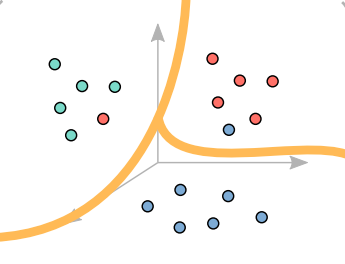 Inferring and Explaining Potential Citations to Binding Precedents in Brazilian Supreme Court DecisionsLucas Emanuel Resck DominguesFundação Getulio Vargas , Dec 2021
Inferring and Explaining Potential Citations to Binding Precedents in Brazilian Supreme Court DecisionsLucas Emanuel Resck DominguesFundação Getulio Vargas , Dec 2021The Brazilian Supreme Court (STF) is the highest law court in Brazil and it is primarily responsible for guarding the Brazilian Constitution. To reduce judicial insecurity and the high Court’s workload, a Constitutional Amendment from 2004 allowed STF to create binding precedents (“Súmulas Vinculantes,” BPs). A BP is a statement that consolidates the understanding of STF about a legal matter and has mandatory application for lower branches of the Judiciary. Frequently, an STF Justice cites a BP in a decision, and it is trivial to search for these explicit citations using regular expressions. However, it is not trivial to assert whether a decision potentially cites the statement, in the sense of “it should have cited it, but it did not” or “it addresses a similar issue, so they are related.” This work explores machine learning and natural language processing (NLP) algorithms to infer and explain these potential citations. The inference is performed using models from classical machine learning theory and recent NLP research, and the explanation is achieved using a machine learning explainability technique. The models learn what characterizes a citation through training on documents with explicit citations, in which we demonstrate they achieve high performance. We present two case studies that demonstrate the usefulness of the trained models to search for potential citations when accompanied by the explainability technique to inform the most relevant parts of the document for the potential citation assignment.
@phdthesis{domingues_inferring_2021, address = {Rio de Janeiro, Brazil}, title = {Inferring and {Explaining} {Potential} {Citations} to {Binding} {Precedents} in {Brazilian} {Supreme} {Court} {Decisions}}, url = {https://hdl.handle.net/10438/31845}, language = {eng}, school = {Fundação Getulio Vargas}, author = {Domingues, Lucas Emanuel Resck}, month = dec, year = {2021}, bibtex_show = true, google_scholar_id = {_FxGoFyzp5QC}, }
2018
- ReportCircuits for Driving Low Power Direct Current MotorsLucas Emanuel Resck Domingues, and Júlia Gandini BlahunOriginal title in Portuguese: “Circuitos para Acionamento de Motores de Corrente Contínua de Baixa Potência” , Dec 2018
@techreport{domingues_circuits_2018, address = {Varginha, Brazil}, type = {Scientific initiation project report}, title = {Circuits for {Driving} {Low} {Power} {Direct} {Current} {Motors}}, language = {pt}, institution = {Federal Center for Technological Education of Minas Gerais}, author = {Domingues, Lucas Emanuel Resck and Blahun, Júlia Gandini}, year = {2018}, pages = {32}, bibtex_show = true, google_scholar_id = {roLk4NBRz8UC} }
2016
- ReportBrazilian Robotics Olympiad – OBR’2016, Level II Practical ModalityJúlia Gandini Blahun, Luiza de Souza Pinto Regina, and Lucas Emanuel Resck DominguesOriginal title in Portuguese: “Olimpíada Brasileira de Robótica – OBR’2016, Modalidade Prática de Nível II” , Dec 2016
@techreport{blahun_brazilian_2016, address = {Varginha, Brazil}, type = {Scientific initiation project report}, title = {Brazilian {Robotics} {Olympiad} – {OBR}’2016, {Level} {II} {Practical} {Modality}}, language = {pt}, institution = {Federal Center for Technological Education of Minas Gerais}, author = {Blahun, Júlia Gandini and Regina, Luiza de Souza Pinto and Domingues, Lucas Emanuel Resck}, year = {2016}, pages = {13}, bibtex_show = true, google_scholar_id = {LkGwnXOMwfcC} }
